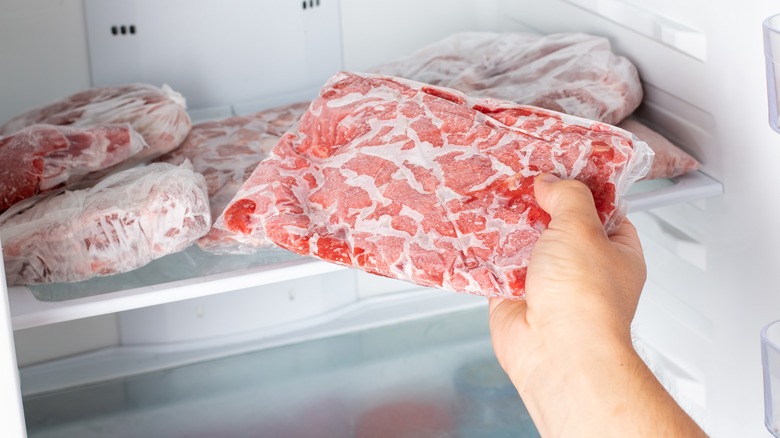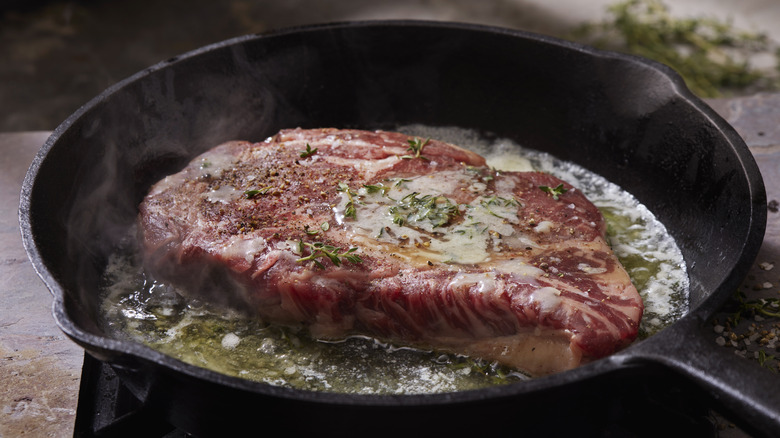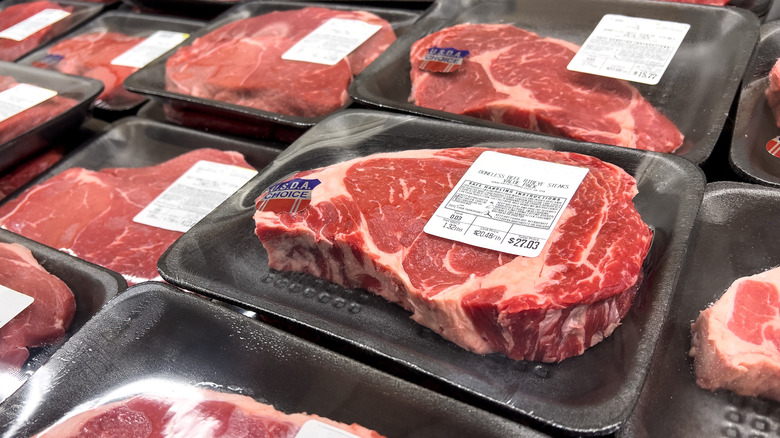Why Professional Chefs Have Beef With Frozen Meat
Not all frozen food is bad. Sometimes frozen items will ultimately deliver even better quality or fresher food than their raw counterparts, like in the case of certain underrated frozen vegetables that are locked in at their peak condition. Even frozen french fries can be superior. But, some frozen food tends to be frowned upon ... and meat is one of them.
If anyone has an opinion on this topic, it's professional chefs — after all, they are some of the people who know meat best. And while there are sound arguments out there for using both fresh and frozen meat, most chefs will take the stance that fresh is always better.
When it's literally your job to cook a dish that's as delicious as possible, the condition of your ingredients is of utmost importance. And most of the time, chefs would say frozen meat simply doesn't deliver. For them, it comes down to pretty much all the factors: the cooking, the quality, the taste, the texture, and the presentation.
Why you should choose fresh meat, according to chefs
There are several reasons why many chefs prefer to cook with fresh meat, whether it's poultry, beef, or game. The first is simply because it's easier to work with in the kitchen. With a fresh product that's never been frozen or altered, you don't have to factor in any thawing time, you eliminate any potential temperature issues, and you can be confident the meat will cook evenly, regardless of the chosen method.
And while there may not necessarily be evidence that freezing meat negatively impacts its ultimate taste (if frozen and thawed correctly, that is), chefs would argue that freezing meat impacts the preparation of the meat, and that can play a big role in its texture and flavor. For example, a fresh cut of meat is able to fully absorb the flavors of a marinade and produce a juicier final result; a frozen cut of meat won't reap the same benefits.
Finally, some professional chefs believe fresh meat presents better and looks tastier — which is important when you're a chef, whether you're serving food to public patrons or a private dinner party. Freezing and thawing can affect the coloring of certain meats, which can turn some people off, and in the end most chefs want their dish to look as good as it tastes.
How to choose fresh meat
If you're going to spring for fresh meat, which is most likely going to cost you more than frozen options, you'll want to make sure you're choosing wisely. There are some important tips you can keep in mind next time you're perusing the meat aisle at your local grocery store.
First, pay attention to color: poultry should be pink, lamb should be light pink to red, pork should be pink to light red, and beef should be a brighter or deeper red. You shouldn't see any gray coloring or dark spots on any of the meat. Any fat should be white, and the more dispersed and marbled it is, the tastier the cut will be. Also, give the meat a poke: All types of meat should feel cold, dry, and firm, and shouldn't be mushy or sink in too much when you press into it. And lastly, sniff it: You shouldn't smell any kind of odor, just a clean, meaty musk.
Aside from physically assessing the meat, be sure to look at the label. Not just for signs of breakage, tears, or lots of liquid, which you'll want to stay away from, but also for crucial information. Double check the sell-by date, and more importantly, the use-by date. And when possible, go for organic and free range or grass-fed meats — since animals that graze tend to have naturally higher-quality and better-tasting meat.



